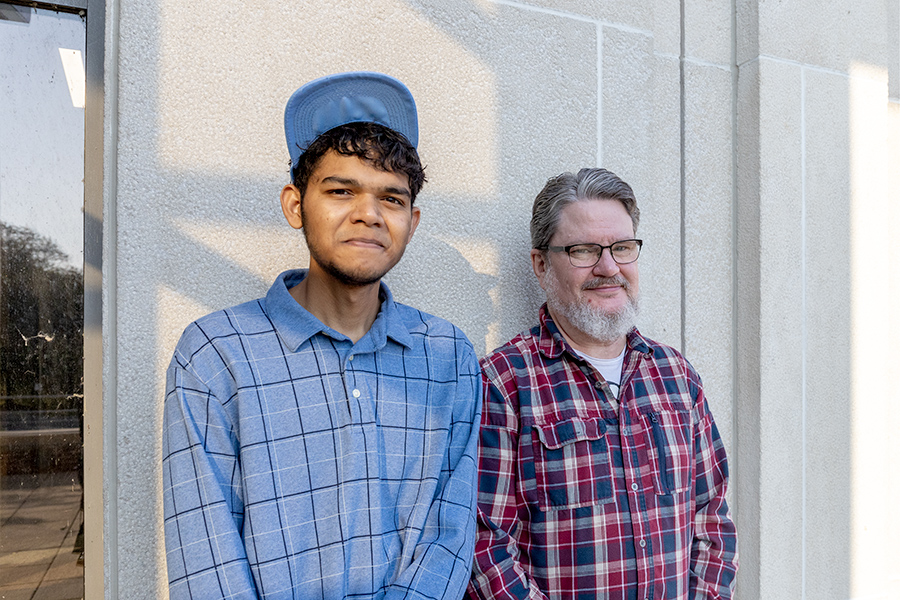[ad_1]
Ithaca College purchased new astrophotography equipment — like telescopes, cameras, and light filters — in Summer 2023. Poor weather conditions have made capturing photos of the sky with the new equipment challenging, but the Department of Physics and Astronomy is working toward making the sky and the new equipment more accessible to students.
Images of space are captured by placing specialized cameras in front of a telescope, which function similarly to the human eye and a pair of glasses: the telescope makes the image accessible to the camera. However, the newly purchased equipment is much more powerful than a pair of glasses. By using different light filters, astrophotography cameras are capable of capturing light that is not part of the visual spectrum.
Sophomore Suryash Malviya, a physics and astronomy and computer science double major, worked with the new equipment extensively over the summer. The funding for the equipment — which cost $1,500 — came from a combination of alumni gifts and the Physics and Astronomy Department’s annual research budget.
Malviya spent eight weeks doing astronomical research at the college through the Summer Scholars Program.
The Summer Scholars Program is a selective program that gives students in the School of Humanities & Sciences the opportunity to work with staff on paid research projects. Malviya worked with Matthew Price, professor in the Department of Physics and Astronomy.
Malviya said astrophotography practically supplements the theoretical study of the components of the sky.
“Astrophotography is the art of visually recording what’s in the sky,” Malviya said. “We can only see a particular part of the light spectrum, so astrophotography helps us see what’s out there.”
Price and Malviya used specialized cameras in their research, including planetary cameras and deep-sky cameras. However, smoke from the Canadian wildfires polluted the sky over the summer, making research difficult.
“We didn’t get a whole lot of data,” Price said. “You can’t see through the smoke, so a big optical telescope is going to be useless in the clouds.”
High concentrations of smoke made it unsafe to go outside and use the equipment. Malviya said the observatory was inaccessible over the summer because of these weather complications.
“You don’t get to explore all of the features of the camera unless you put it into use in the real world,” Malviya said.
Price said smoke from wildfires could have been dangerous to the telescopes and cameras, which forced Malviya and Price to be cautious in their research.
However, at the end of summer, the college ordered a radio telescope that functions differently from a traditional telescope. Instead of using optics, it collects and amplifies radio waves, which eliminates the obstacle of capturing unclear images or damaging the cameras.
“It might be cloudy, but you can still use the [radio] telescope and do your work from inside, so it’s really helpful,” Malviya said.
A new optical telescope was also installed in August 2022 at the Clinton B. Ford Observatory, located in the Natural Lands, after it was forced to close following the COVID-19 pandemic.
“[The observatory] was taken over by the nature [during the pandemic] because no one was maintaining it,” Malviya said. “A bunch of mice got inside and they chewed up a bunch of wires.”
The observatory reopened in Fall 2022. Price plans to open the observatory to students and use the new astrophotography equipment there starting Fall 2023 to make up for lost time.
“We will start having regular public viewing nights, but there are still some things we need to do,” Price said. “We truly only had the new optics and the new mount up there for just a year and we lost months of summer work because of the smoke and rain.”
Students need to be involved in independent astronomy research in order to use the new astrophotography equipment, but this equipment is not necessary to capture the sky.
Senior Nikolaj Konieczny, a physics and astronomy major and president of the Astronomy Club, practices astrophotography using a telescope and the camera on his phone.
“I want astrophotography to be something that’s accessible to anybody,” Konieczny said. “I don’t see why you shouldn’t have a picture of Saturn on your phone. Everybody has the ability to put their phone right up to the eyepiece and snap a picture of that.”
The Astronomy Club, which is advised by Price, has access to its own equipment that can now be used by anyone, including a large telescope. The Astronomy Club plans to meet every week and will soon have access to the observatory, where they will host their own public viewing nights.
“Previously, [the Astronomy Club] was an academic-only club, and I personally don’t see why we should gatekeep the universe from other people,” Konieczny said. “It’s beautiful. It’s something you have to share with everybody.”
[ad_2]
